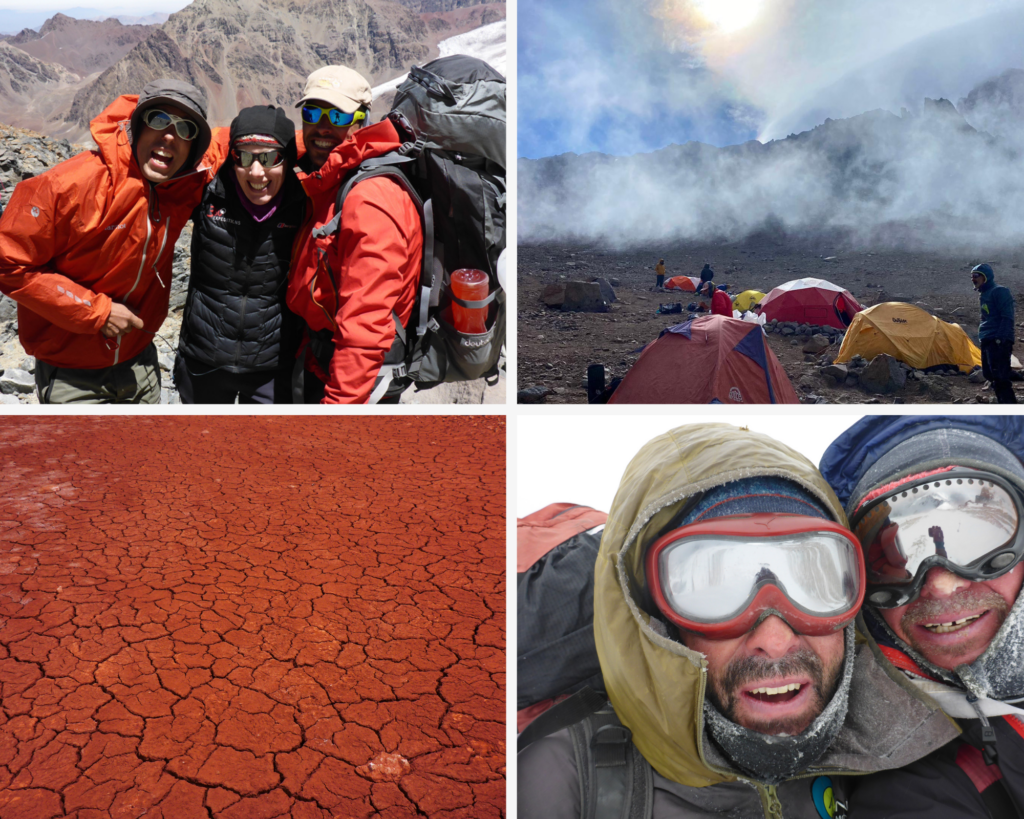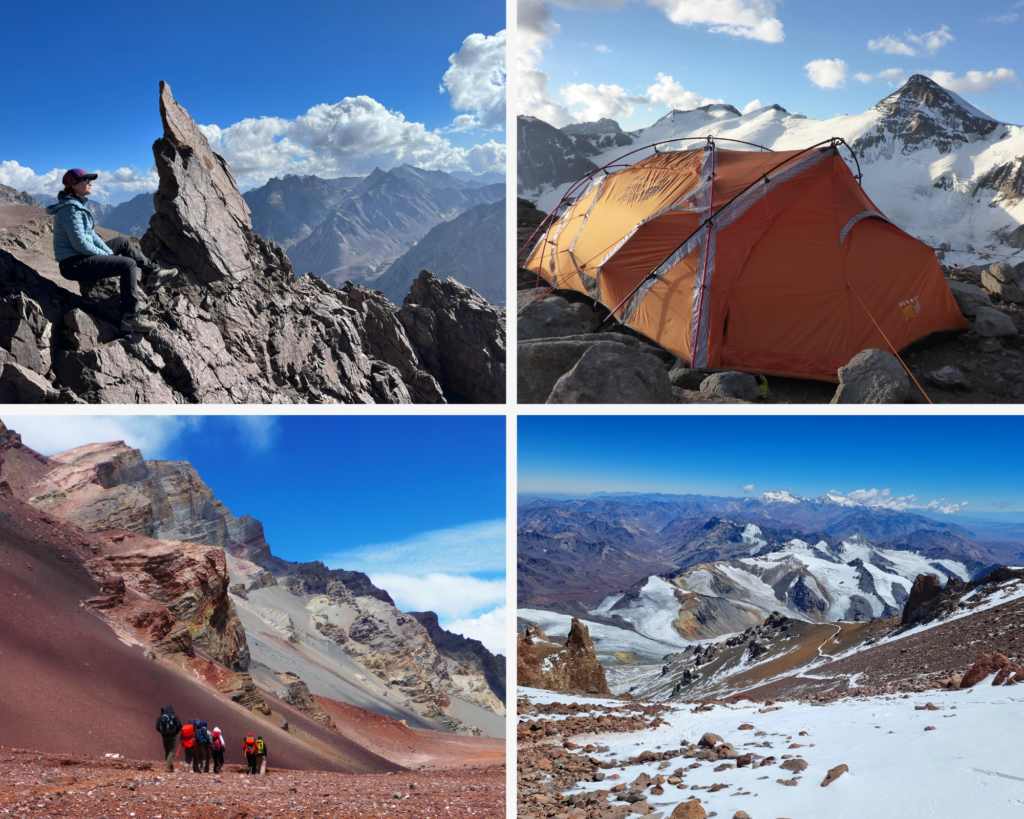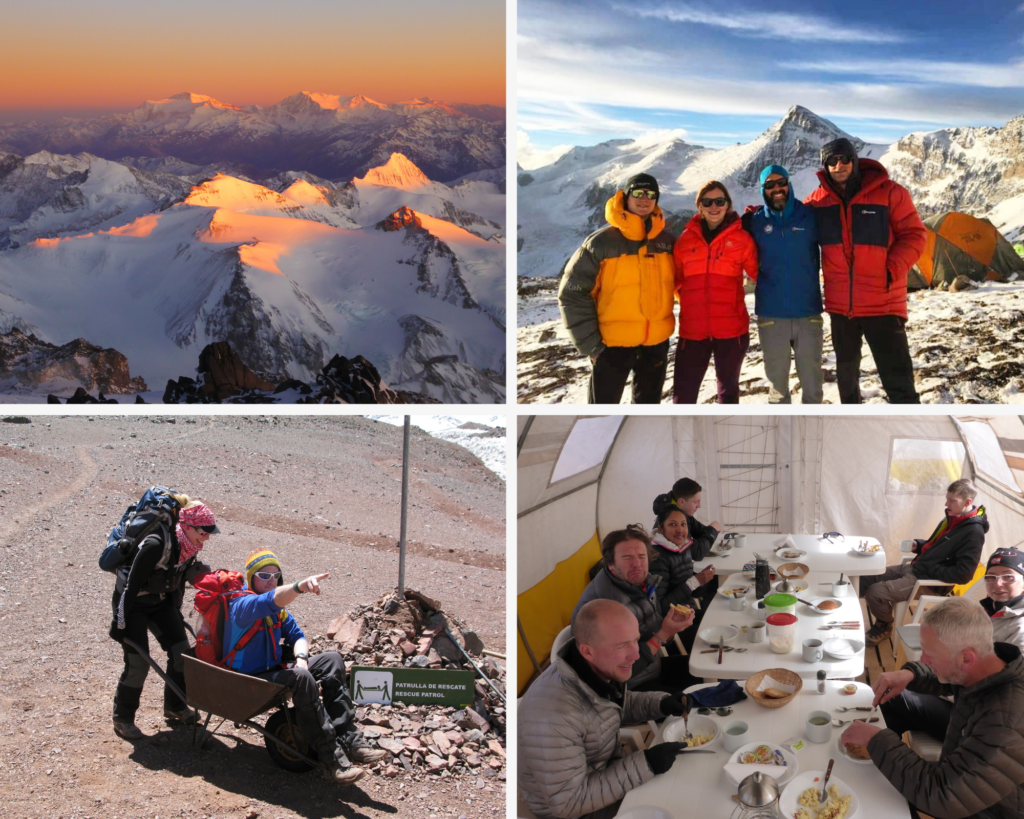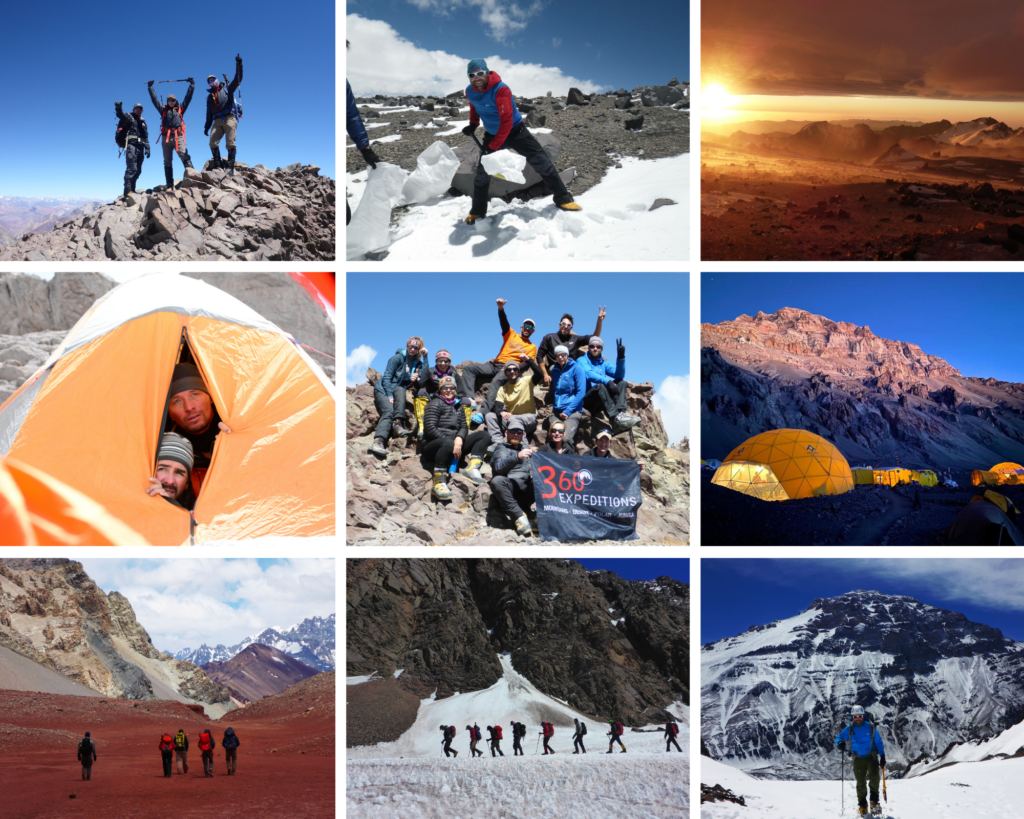Topping out at 6,962 metres, Aconcagua is the jewel of the Andes, the highest mountain outside Asia and a formidable, often underestimated challenge. It is typically regarded as the highest non-technical trekking peak in the world, making it a fantastic step up from Kilimanjaro and a perfect pre-Everest warm-up.
Part of the world-famous Seven Summits Circuit, Aconcagua is a must-do for any passionate mountaineer looking to work their way around all seven continents or wanting to take on a ferocious mountain challenge. Many of the world’s most iconic climbers have stood atop Aconcagua’s summit at one time or another, so why not add your name to that list?
If you are considering climbing Aconcagua, here is all you need to know.
Aconcagua – understanding the mountain
Situated in Argentina’s Mendoza province, midway up the country’s western edge and just 15 km from its border with Chile, Aconcagua rises from the heart of Aconcagua Provincial Park. Long considered unclimbable, Edward FitzGerald’s expedition made eight failed attempts to reach the summit over a three month period. The expedition’s Swiss guide, Matthias Zurbriggen finally made the first recorded ascent on the 14th of January 1897.
Since then, mountaineers have flocked to Aconcagua in the hope of reaching the summit. Passing through the dry and dusty lower slopes, they trek up into a harsh and hard landscape erupting with contorted rock formations and jagged edges. The mountain’s spectacularly steep west face looms large over base camp, the rock’s red hue burning deep and bright in the mountain light. Snow and ice dress the mountain’s upper reaches. It is breathtakingly beautiful but cruelly inhospitable.

This cruelty is reflected in the number of failed ascents. Despite being a “non-technical” route, approximately two-thirds of the 3,500 people who try to reach the summit every year do not make it. In large part, this is because far too many people underestimate Aconcagua and the challenge the “Stone Sentinel” presents. Ascents may not usually require ropes and ice axes but the altitude and cold are exacting and make it a supremely challenging climb.
Exploring the routes
While there are several routes up Aconcagua, the most famous two are the Normal Route and the Polish Glacier.
Normal Route
The vast majority of climbers attempt the Normal Route and Aconcagua’s reputation as the world’s highest trekking peak is based on it. Typically, the route involves trekking from Confluencia to the expedition base camp at Plaza de Mulas. From there, the route ascends to Camp Canada at 5,000 metres, Nido de Cóndores at 5,400 metres, followed by Camp Berlin at 5,950 metres or Camp Colera at 6,000 metres. The final bid for the summit passes the Independencia Hut and Windy Gap, before heading across an often snowy traverse towards the Canaleta, a 350m U-shaped couloir that leads to the summit ridge.
Polish Glacier Route
The Polish Glacier Route is considered far trickier than the Normal Route, as it involves technical climbing. It consists of a direct ascent of the mountain’s eastern side, crossing the Polish Glacier as you head towards the summit from the direction of Penitentes. This route requires ropes, ice axes and experience crossing glaciers.
It is also worth noting that there is a third route – the Polish Traverse – that utilises the Polish Glacier before connecting with the Normal Route for the final ascent to the summit.
What conditions can you expect on Aconcagua?
Aconcagua is renowned for temperamental weather. Conditions can change quickly and the mountain is regularly exposed to high winds that make summiting extremely difficult or impossible. The climbing season runs from mid-November to the end of March. However, most ascent attempts take place between mid-December and the end of January, as this is when the conditions are most favourable.
That said, temperatures remain cold all year around, often dropping to -30 degrees during climbing season. For this reason, frostbite is a significant risk. When climbing Aconcagua, building a little flexibility into your plans is essential and gives you some leeway when it comes to rapidly changing weather conditions.

360 Expedition’s 25-day Aconcagua itinerary has been designed to give you the best chance to summit, with rest days alternating between strenuous days of load carrying, and a flexible summit time-frame where at least 3 nights can be spent at high camp to wait for good climbing conditions.
What about altitude sickness?
The altitude and weather account for nearly all failed Aconcagua ascents. Acute Mountain Sickness (AMS) and other manifestations of altitude sickness, such as High altitude pulmonary edema (HAPE) and High altitude cerebral edema (HACE), are common issues and often force climbers back down the mountain. As such, acclimatisation must be planned and executed methodically and all climbers should be aware of altitude sickness symptoms and be able to respond appropriately.
How fit do you need to be?
Aconcagua requires you to be extremely fit. The expedition usually involves at least 18 days of trekking, each of which can involve 10 to 15 hours of exposure to testing weather under a 15-20 kg load. It is difficult to understate how much of a physical challenge Aconcagua is. Though the low success rate should tell you everything you need to know, climbers regularly turn up under-prepared for the physical demands. Superb aerobic fitness and the leg strength to match are absolutely critical.
How much of a technical challenge is Aconcagua?
As Aconcagua is traditionally thought of as a trekking peak, the technical challenge is relatively low compared to other summits of a similar or even lower altitude. However, experience with ice axes and crampons is valuable.

Aconcagua’s billing as a trekking peak may also misrepresent the nature of the expedition. Typically, participants will scale the mountain “expedition style”, carrying their own equipment and moving it up the mountain a little at a time. Not only does this help with acclimatisation, but it also gives climbers experience of an “authentic” mountain expedition.
Climbing Aconcagua with 360 Expeditions
At 360 Expeditions, we organise our own 25-day Aconcagua expedition that follows the Normal Route but adds a few extra elements to enhance the experience and assist with acclimatisation. It includes a trek to Plaza Francia, the famous south face look-out, and the ascent of Pico Bonette, a 5,000-metre peak that offers an unparalleled view of the Aconcagua summit route and helps accustom climbers to the altitude.
Based on our extensive experience climbing the mountain, we have created a bespoke expedition itinerary that allows for at least three nights at high camp. This gives us maximum flexibility should conditions prevent us from making an immediate ascent.
To learn more about our expedition, visit the Aconcagua expedition page and check out our responses to your FAQs. We pride ourselves on our approachability and would love to hear from you if you have any questions or want to discuss Aconcagua – just drop us a line.
